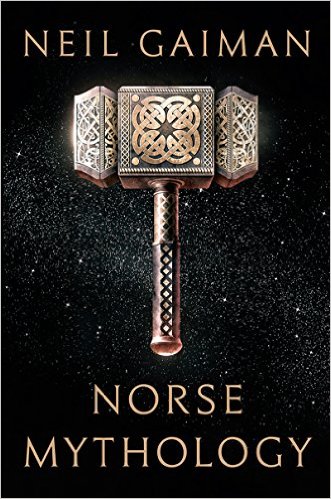“Have you wondered, even a little, about what the cover of the Norse Mythology I wrote for W.W. Norton will look like?” Neil Gaiman tweeted earlier today, and then answered his own (and no doubt fans’) question: Simple, with the iconic (and badass-looking) hammer Mjolnir against a backdrop of stars. It’s a fitting choice, considering that Gaiman’s intent in retelling Norse myths about Odin, Thor, Loki, and everyone else is to stay true to the source material while endearing the stories to young readers approaching them for the first time.
Here’s what we know about Gaiman’s take on Norse mythology, starting with origin stories and ending (no surprise) with Ragnarok:
Neil Gaiman has long been inspired by ancient mythology in creating the fantastical realms of his fiction. Now he turns his attention back to the source, presenting a bravura rendition of the great northern tales. In Norse Mythology, Gaiman fashions primeval stories into a novelistic arc that begins with the genesis of the legendary nine worlds; delves into the exploits of the deities, dwarves, and giants; and culminates in Ragnarok, the twilight of the gods and the rebirth of a new time and people. Gaiman stays true to the myths while vividly reincarnating Odin, the highest of the high, wise, daring, and cunning; Thor, Odin’s son, incredibly strong yet not the wisest of gods; and Loki, the son of a giant, a trickster and unsurpassable manipulator. From Gaiman’s deft and witty prose emerges the gods with their fiercely competitive natures, their susceptibility to being duped and to dupe others, and their tendency to let passion ignite their actions, making these long-ago myths breathe pungent life again.
The cover:

Gaiman also tweeted a GIF version of the cover, complete with spinning Mjolnir. Wheee!

Norse Mythology will be published in the US by W.W. Norton on February 7, 2017; Bloomsbury will publish it in the UK, also in February 2017, with an illustrated Christmas edition to follow in 2018.









